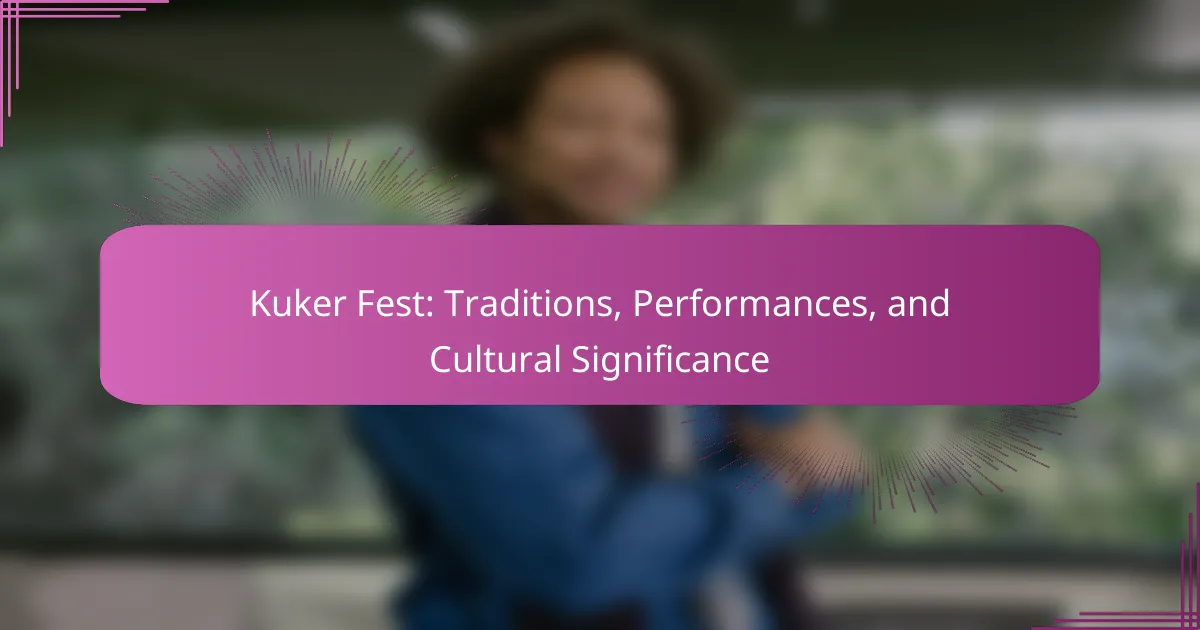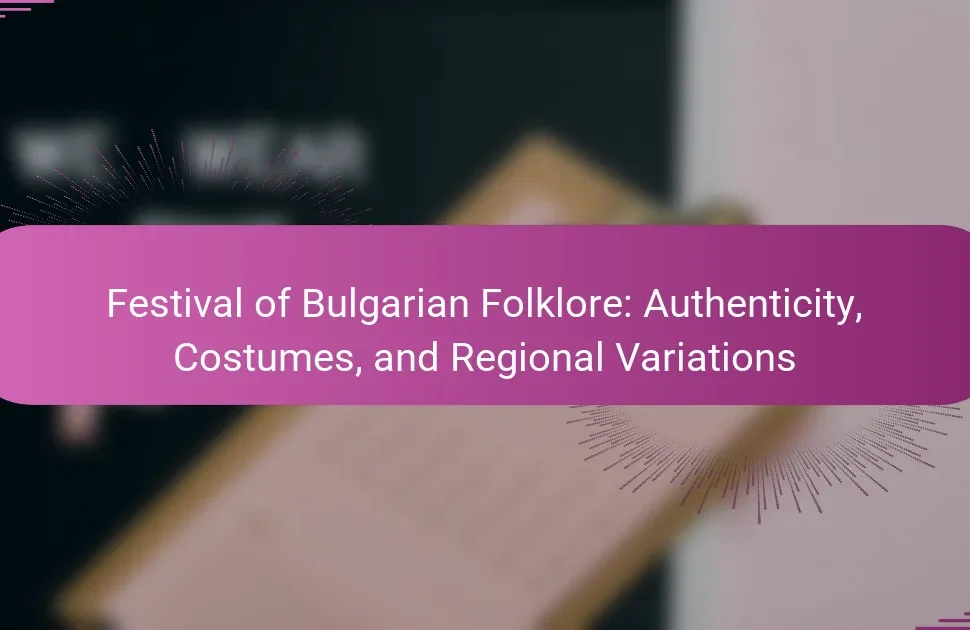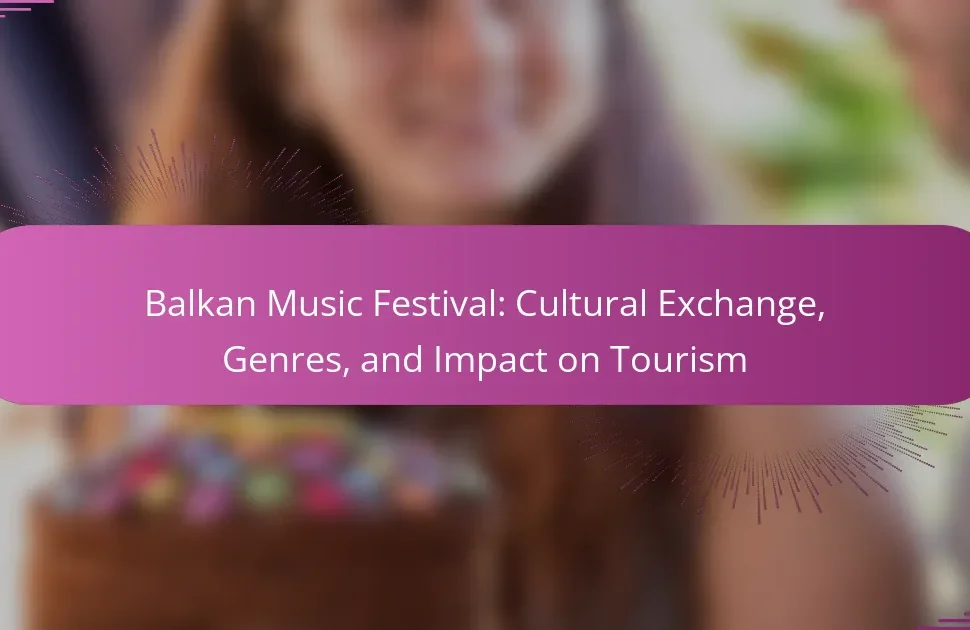Kuker Fest is a vibrant celebration that showcases Bulgaria’s rich cultural heritage through masked performances, folk dances, and rituals. The festival emphasizes community spirit and renewal, featuring elaborate costumes and unique masks. It also faces challenges from modernization and environmental concerns, prompting discussions on preserving its authenticity. Engaging with local traditions enhances the festival experience and fosters cultural appreciation.
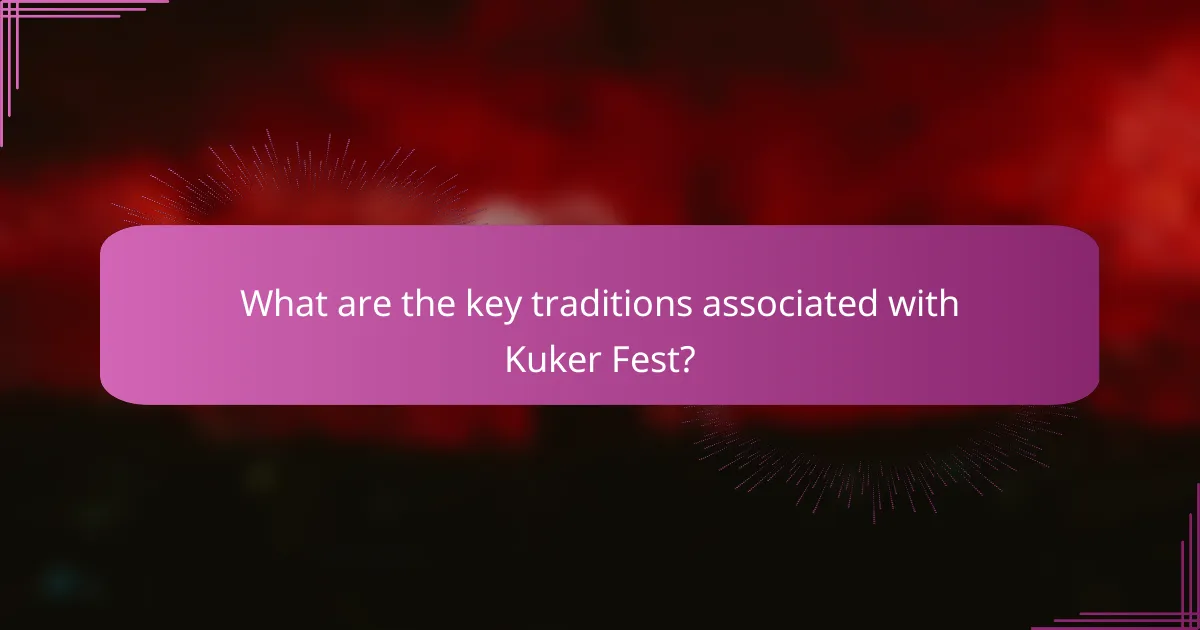
What are the key traditions associated with Kuker Fest?
Kuker Fest features vibrant traditions including masked performances, folk dances, and rituals aimed at driving away evil spirits. These customs reflect the cultural significance of the festival, celebrating renewal and community spirit. Performers dress in elaborate costumes, often representing mythical creatures, enhancing the festive atmosphere. The event fosters local unity and showcases Bulgaria’s rich folklore heritage.
How do these traditions vary across different regions?
Kuker Fest traditions vary significantly across regions, reflecting local customs and cultural influences. In Bulgaria, the festival emphasizes vibrant costumes and traditional dances, showcasing the kukeri’s role in driving away evil spirits. In contrast, the Greek version focuses on community bonding and includes unique rituals specific to each village. The Serbian celebration highlights music and theatrical performances, integrating folklore elements that resonate with local history. Each region’s interpretation of Kuker Fest enriches the overall cultural significance, making it a diverse celebration of heritage.
What role do costumes play in the festival?
Costumes play a central role in Kuker Fest by embodying cultural heritage and enhancing the festival’s vibrant atmosphere. They represent various characters, myths, and traditions, allowing participants to immerse themselves in the rich folklore of the region. The elaborate designs and colors of the costumes also serve to attract attention and foster community engagement. Each costume can reflect unique attributes, such as historical significance or regional styles, making them essential to the festival’s identity and cultural expression.
Why is the ritual of dancing significant during Kuker Fest?
The ritual of dancing during Kuker Fest is significant as it embodies cultural identity and communal unity. This vibrant expression showcases traditional folklore, with dancers donning elaborate masks and costumes. The performances symbolize the struggle against winter and the welcoming of spring, reinforcing agricultural prosperity. Additionally, the rhythmic movements serve as a means of storytelling, passing down ancestral traditions and fostering a sense of belonging among participants and spectators alike.
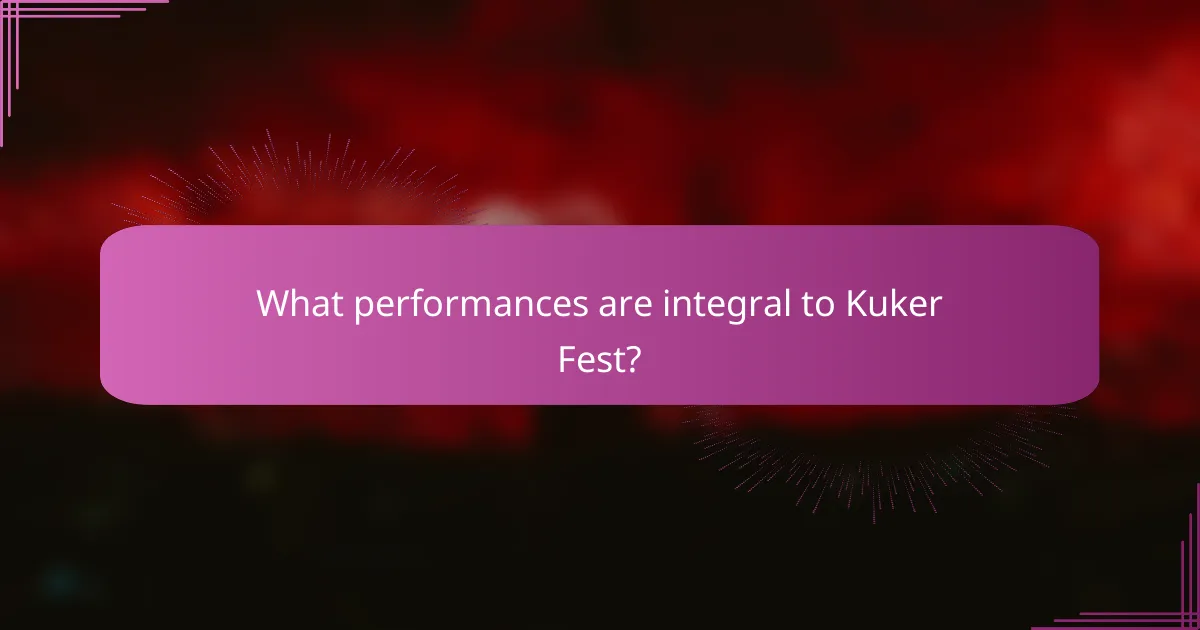
What performances are integral to Kuker Fest?
Kuker Fest features traditional performances including masquerade dances, music, and rituals that celebrate the arrival of spring. These performances highlight the cultural significance of Kuker Fest, showcasing vibrant costumes and unique masks. Participants embody various characters, often representing folklore and local legends, enhancing community engagement and cultural preservation. The festival’s performances attract visitors, fostering appreciation for Bulgarian heritage.
Which traditional dances are featured and what do they symbolize?
Kuker Fest features traditional dances such as Kukeri and Nestinar. These dances symbolize the expulsion of evil spirits and the celebration of fertility, respectively. Kukeri dancers, adorned in elaborate costumes, perform to drive away negative forces, while Nestinar dancers engage in fire-walking, representing a connection to the divine and the cycles of life.
How do music and sound enhance the festival experience?
Music and sound significantly enhance the Kuker Fest experience by creating an immersive atmosphere. Traditional rhythms and melodies evoke cultural pride, connecting participants to their heritage. Live performances showcase local talent, fostering community engagement and enriching the festival. The unique sounds of traditional instruments add authenticity, making each moment memorable. Additionally, soundscapes amplify the festive spirit, encouraging participation in rituals and celebrations. Overall, music and sound are vital in shaping the emotional and cultural significance of Kuker Fest.
What are the roles of performers and participants?
Performers and participants at Kuker Fest play vital roles in preserving and showcasing cultural traditions. Performers, often dressed in elaborate costumes, enact rituals that symbolize the transition from winter to spring. Participants engage in these performances, enhancing the communal spirit and cultural significance of the festival. The unique attribute of Kuker Fest is its blend of theatricality and folklore, making it a vibrant celebration of heritage. Together, they create an immersive experience that educates attendees about the customs and history of the region.

How does Kuker Fest reflect cultural significance?
Kuker Fest reflects cultural significance through its vibrant traditions and performances that celebrate heritage. The festival showcases unique masks, music, and dances, symbolizing the community’s identity. Participants engage in rituals that promote unity and cultural continuity, reinforcing social bonds. Additionally, Kuker Fest attracts tourism, contributing to local economies and cultural exchange.
What are the historical roots of Kuker Fest in local communities?
Kuker Fest has deep historical roots in local communities, originating as a springtime celebration to ward off evil spirits. This tradition incorporates ancient rituals and folk performances, showcasing vibrant costumes and masks. The festival reflects a unique blend of pagan and Christian influences, emphasizing community bonding and cultural heritage. Over time, Kuker Fest has evolved, yet it retains its core significance in preserving local customs and fostering social cohesion.
How does the festival promote cultural heritage and identity?
Kuker Fest promotes cultural heritage and identity through traditional performances, costumes, and rituals. These elements showcase regional folklore and customs, fostering community pride. The festival serves as a platform for intergenerational knowledge transfer, ensuring cultural practices are preserved. Additionally, Kuker Fest attracts visitors, enhancing cultural exchange and appreciation.
What impact does Kuker Fest have on community cohesion?
Kuker Fest significantly enhances community cohesion by fostering cultural pride and social interactions. The festival brings together diverse groups, promoting collaboration and understanding among participants. Traditional performances and rituals strengthen communal bonds, creating a shared identity. As a result, Kuker Fest plays a crucial role in uniting the community through collective celebration and participation.
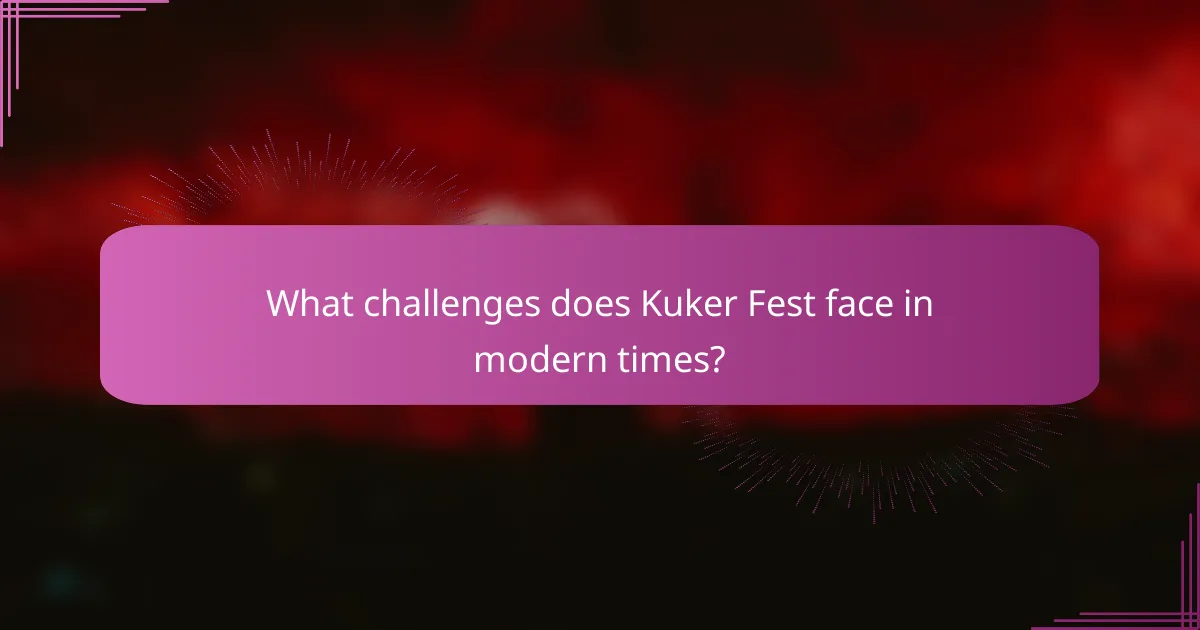
What challenges does Kuker Fest face in modern times?
Kuker Fest faces challenges such as modernization, loss of traditional practices, and environmental concerns. As society evolves, younger generations may show less interest in cultural traditions. This shift threatens the festival’s authenticity and cultural significance. Additionally, urbanization can lead to decreased participation and support from local communities. Environmental factors, including climate change, pose risks to the festival’s outdoor events and performances. These challenges require adaptation and innovative solutions to preserve Kuker Fest’s heritage.
How is the festival adapting to contemporary cultural shifts?
Kuker Fest adapts to contemporary cultural shifts by incorporating modern themes and diverse performances. The festival embraces innovation while maintaining its traditional roots. For example, it features contemporary art installations alongside traditional Kuker masks. This blend attracts younger audiences and fosters cultural exchange. Additionally, the festival promotes sustainability, aligning with global trends in environmental awareness.
What are the environmental considerations associated with the festival?
Kuker Fest presents several environmental considerations that warrant attention. The festival’s large gatherings can lead to waste generation and habitat disruption. Sustainable practices, such as recycling and waste management, are essential to minimize ecological impact. Additionally, noise pollution from performances may affect local wildlife. Engaging the community in conservation efforts enhances the festival’s positive environmental footprint.
How do local governments and organizations support Kuker Fest?
Local governments and organizations actively support Kuker Fest through funding, promotion, and logistical assistance. They collaborate to preserve cultural traditions and enhance community engagement. Local authorities often provide venues, security, and resources, ensuring the festival runs smoothly. Additionally, partnerships with cultural organizations help showcase performances and attract visitors, amplifying the festival’s significance in celebrating local heritage.
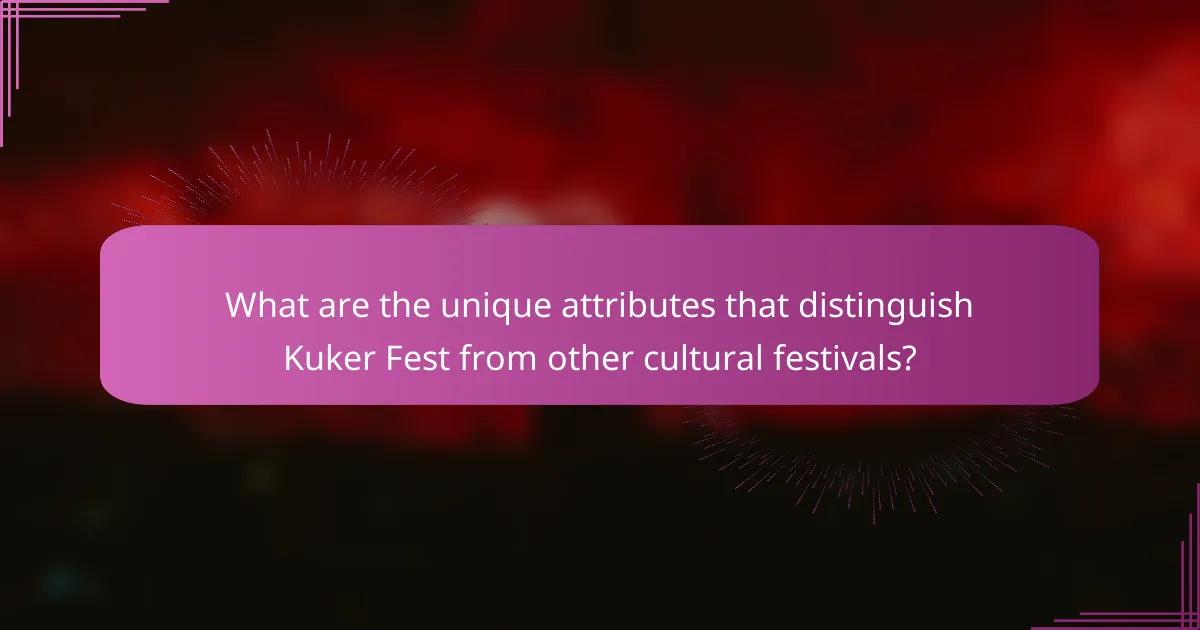
What are the unique attributes that distinguish Kuker Fest from other cultural festivals?
Kuker Fest is distinguished by its unique blend of traditional rituals, vibrant performances, and deep-rooted cultural significance. The festival features elaborate costumes and masks, representing ancient folklore and local myths. Performances include lively music and dance, showcasing the community’s artistic heritage. The event fosters a strong sense of identity and unity among participants, promoting cultural preservation. Additionally, Kuker Fest emphasizes interaction, inviting visitors to engage with the traditions, unlike many other cultural festivals that focus solely on passive observation.
What rare practices or performances are exclusive to specific regions?
Kuker Fest features rare practices and performances unique to Bulgaria, particularly in the Rhodope Mountains. These include the Kukeri dance, where participants wear elaborate masks and costumes to chase away evil spirits. The event also showcases traditional music and rituals, reinforcing community bonds and cultural heritage. The vibrant atmosphere and distinct local customs make Kuker Fest a significant cultural event in the region.
How do local legends and myths shape the festival’s narrative?
Local legends and myths significantly shape Kuker Fest’s narrative by enriching its cultural context. These stories often highlight the festival’s roots in local history and folklore, creating a sense of identity and continuity. For instance, the Kuker figures symbolize the triumph of good over evil, reflecting ancient beliefs about seasonal cycles and agricultural prosperity. As a result, these narratives foster community engagement and participation, making the festival a vibrant expression of collective heritage. The unique attributes of these legends, such as specific characters or events, add depth to the performances and rituals observed during the festival, reinforcing its cultural significance.
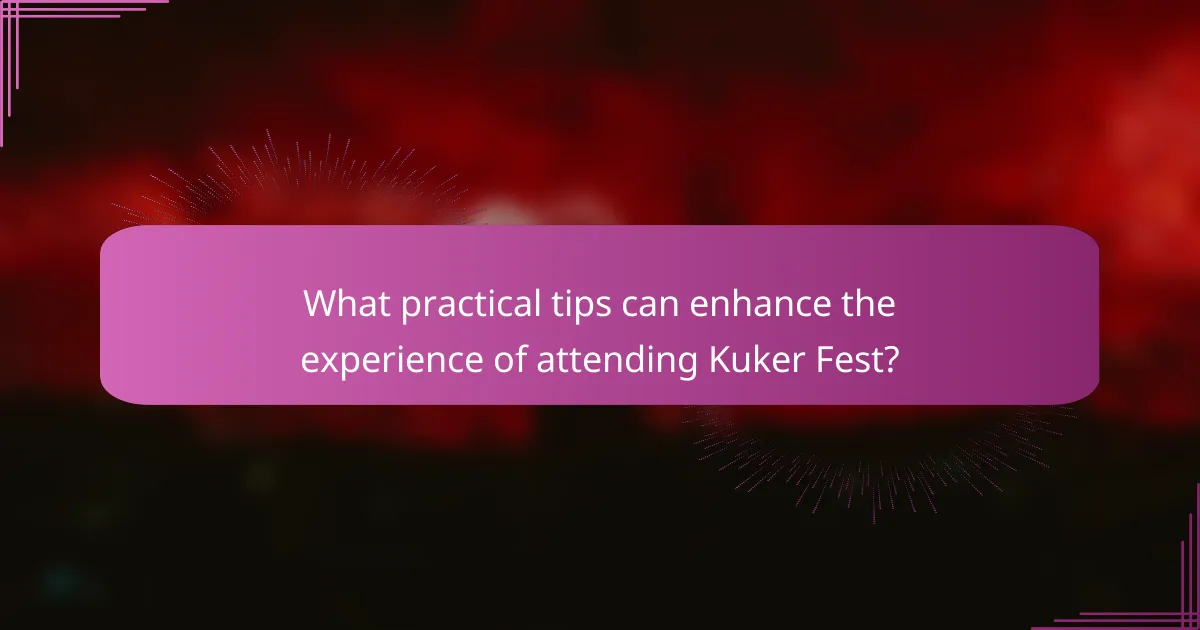
What practical tips can enhance the experience of attending Kuker Fest?
To enhance the experience of attending Kuker Fest, engage with local traditions and participate actively. Immerse yourself in the vibrant performances and dress in traditional attire to connect with the cultural significance of the event. Arrive early to explore the festival grounds and enjoy local cuisine, which adds to the festive atmosphere. Lastly, interact with performers and locals to deepen your understanding of Kuker Fest’s rich heritage.
How can visitors respectfully engage with the traditions?
Visitors can engage with Kuker Fest traditions by showing respect, participating thoughtfully, and observing cultural practices. Understanding the significance of the masks and rituals enhances appreciation. Attending performances respectfully and avoiding disruptive behavior fosters a positive atmosphere. Engaging in conversations with locals can deepen cultural insights and strengthen community ties.
What are common mistakes to avoid when participating in Kuker Fest?
To avoid common mistakes at Kuker Fest, participants should focus on respecting traditions, understanding performance roles, and engaging with the local culture. Many attendees overlook the importance of appropriate attire, which is vital for authenticity. Additionally, failing to learn about the festival’s historical context can lead to misunderstandings. Participants should also avoid interrupting performances and ensure they are respectful to performers and locals alike. Lastly, neglecting to follow event schedules can result in missing key experiences.
